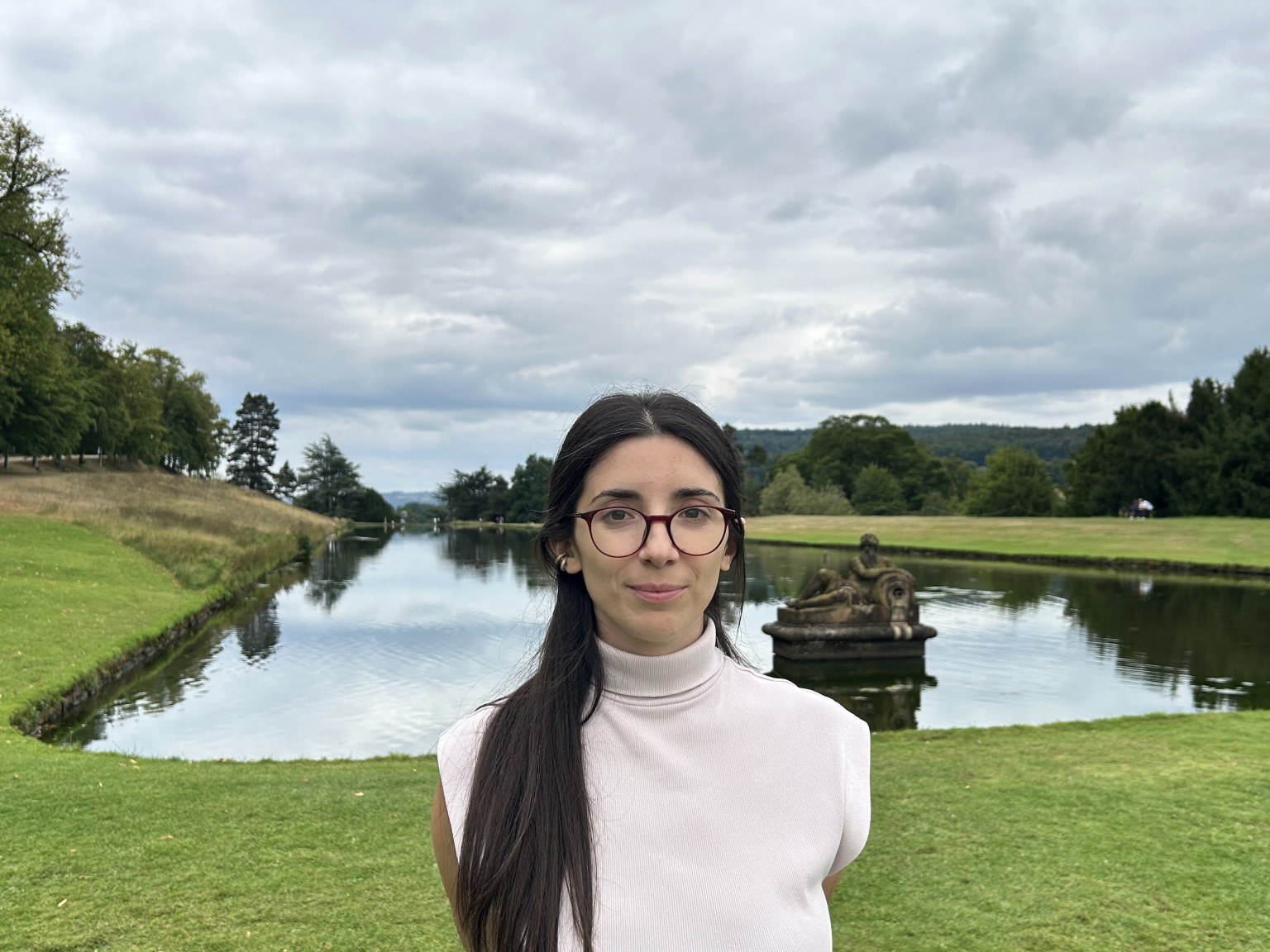
Exploring the invisible: Dr. Ariadni Boziki simulates the molecular world
Chrysovalantou Kalaitzidou

Magazine / Interviews , Technology
Mariza Dima is an interaction designer, industry consultant, and Senior Lecturer in Games Design with a focus on Creative Technology for Games at Brunel University London, where she teaches User Interface and Player Experience design, Digital Prototyping, Games Programming, and Concept Communication. She is an expert in User Experience Design for Immersive Technologies and Games, Creative Technology applications in Gaming, Game-based learning, and Co-design and Experiential Design methods for collaboration and co-creation working in projects between academia and industry sectors such as Cultural Heritage, Health, Education, Visual Arts, and Entertainment.

Mariza explores, by design, how to create meaningful, engaging, seamless experiences, and her practice is driven by an interdisciplinary approach and abundant curiosity about methods and methodologies in other disciplines. She has worked with physical, mobile, haptic, and Mixed Reality technologies and she is currently researching the design of Mixed Reality cultural heritage experiences fusing affective storytelling, dramaturgy, theatre, and games design. Her career has been wildly interdisciplinary, and her practice is informed by a wide range of thinking paradigms: applied mathematics, Human-Computer Interaction (HCI), User Experience design, media studies, and games studies.
Tell us a little bit about yourself, who you are, and what you're doing.
I'm an interaction designer, and I've worked with a lot of different technologies and particularly in the last 3-4 years, with mixed reality. I'm also a senior lecturer in games design at Brunel University, London, in creative technologies for games, where I teach digital prototyping user experience, game designing, programming, and concept communication. I have been an active researcher ever since I finished my PhD in human-computer interaction at the University of Edinburgh back in 2013, and I have continued working in the field in a research and development capacity mostly involving industry as well. My interests revolve around immersive technologies, but also social media and audience engagement between industry and creative industries.
Your first degree is in Applied Mathematics; how did you get into interaction design?
I studied Applied Mathematics at the National Technical University of Athens because I had a love for mathematics, but even before the university, I was working with computers. I was fascinated by maths because of the way of thinking that they instill, identifying patterns, finding creative solutions, and this was my first contact with design thinking. I think that design is a discipline; it’s predominantly a way of thinking. Even if you are an engineer, you still must use design thinking to solve problems. I also have an artistic side, so I combined both by doing an MSc in design and digital media at the University of Edinburgh. There, I got acquainted with the field of media and cultural studies and a lot of the theory behind design and design methodologies and decided to do a PhD on it. My PhD is on human-computer interaction, on design methodologies for transferring the embodied skills of stop motion animators from the physical workspace to a digital workspace. Since then, my postdoctoral experience in creative industries and media led me eventually to games because a lot of what I have done has applications in gaming. My quite interdisciplinary background helped me with that.
Given your multidisciplinary background and your career path, is there anything that you wish you would have done differently?
There is not. I'm very content with where I am now and the fact that I have been curious enough to look at other disciplines. All my projects have been interdisciplinary, and it is something I seek because I learn from other disciplines. I think that innovation comes from interdisciplinary collaboration. Interdisciplinarity is a very big thing right now, especially in academia. We go back to the notion of the University of Universal knowledge, rather than being extremely specialized in something. This expands the horizons and the thinking behind any problem-solving. In fact, especially in the latest years, we not only need STEM, but the missing “A” for Art there: we need STEAM (Science, Technology, Engineering, Arts, Mathematics). My background has given me a lot of skills to understand both engineering and the arts. Especially when we're talking about new and immersive technologies and how ubiquitous these might be in the very near future, it is important to keep this STEAM approach for their design and development.
Art games are about raising awareness and showing a specific aspect of the creative expression of the artist or conveying a message.
You mentioned that you work a lot with games and immersive technologies. Would you consider games to be an art form?
Yes, of course, games are an art form in a sense. It is a medium, therefore, it is a means of expression. We've seen a lot of games that are art games - also called walking simulators- and this distinct genre, which is more abstract, touches upon the area of what we might call art. This is a big discussion, but art games go beyond traditional games that have lots of mechanics, a goal, and very specific rules. Art games are about raising awareness and showing a specific aspect of the creative expression of the artist or conveying a message. They could be technically very simple like walking simulators or more complex to elicit emotion like deep games, a category of games that are mostly about showing specific things, for example, the journey of a refugee. This kind of game genre is closer to what we would call games as an art form. On the other hand, all games are art in a sense. A lot of art goes into games, but maybe in order to have this discussion, we must first define what exactly art is, which is an even bigger discussion.
Are deep games part of serious games in general?
You could say that they are part of serious games because if we go by the definition, serious games are the games that are made for other purposes apart from mere entertainment. Deep games are more specific as they are designed to elicit certain emotions, which is why they are also called emotional games (games that create awareness or political games). So, in that sense, deep games could definitely be part of serious games, but they also have grown into their own category. Examples of these games are The Unfinished Swan and Liyla, The Shadows of War and Journey.
Do you see art evolving through games and through immersive technologies? We've seen this booming technology of virtual reality and augmented reality, and there are already, as you mentioned, deep games and serious games. There are also NFTS in the form of art pieces as part of the Metaverse. For example, YouTube recently gifted their top creators with NFT works of art. Where do you see art in this new environment?
I have very limited knowledge of NFTS at the moment. I know it's part of the new economies that are part of the Metaverse. I have a discussion on that on my podcast. These entities will be part of this new economy, and it could be followed by some artists as well. I am not sure to what extent and in what way or whether this is going to be a positive thing or not.
We are also talking about new media like virtual reality (VR) and augmented reality (AR). All of these have invited new artists to play around. The NFT is more related to the economic side of things. There have been exhibitions in VR, and it will continue to be a space for artistic expression. It is a relatively new medium, and everything that you experience as art in the physical world could exist in some form within VR. Regarding AR, I think we'll have to wait for the advances in smart glasses to see something similar to what we see in VR.
Get to know Mariza and her research field through her Podcast series in Mixed Reality. The podcast features interviews with professionals, researchers and practitioners, artists and designers, working with MR technologies to create new cultural experiences.

Chrysovalantou Kalaitzidou

Thaleia-Dimitra Doudali

Danai Korre
